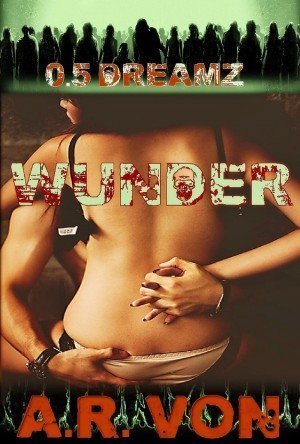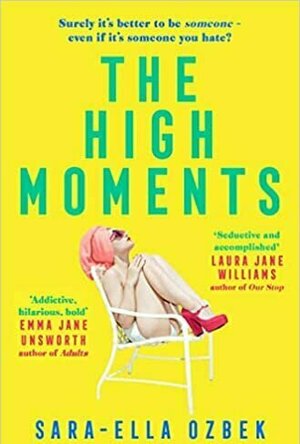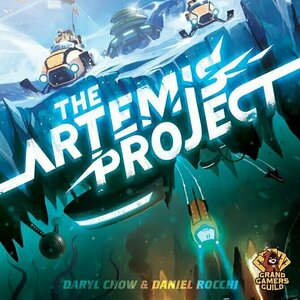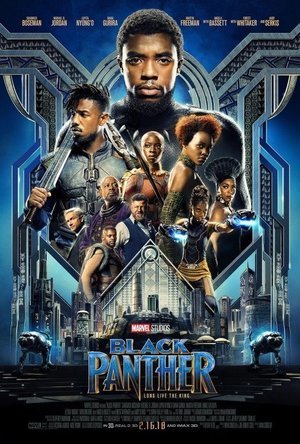Kara Skinner (332 KP) rated Dreamz in Books
Jun 12, 2019
Word Count: 12,470
Average Goodreads Rating: 4.54/5 stars
My rating: 3/5 stars
To be honest, I automatically started to dislike this book because “Dreams” is spelled with a Z. And while it was okay, it was not as good as it could have been.
Wunder has been dreaming about a man for as long as she can remember, always the same man. The dreams leave her aroused to no end at night. Unfortunately, this man doesn’t exist in her life, at least not yet. But her love life is nonexistent and thanks to her being half zombie, that’s not going to change any time soon.
Little does she know that her dream man exists and his name is Pete. Not only does he exist, but he’s been dreaming about her as well. Pete is also half zombie and lives in the next town over with his uncle. When he moves to Wunder’s town to recover from a huge zombie attack, will they finally get to meet in real life?
You can get this book for free on Smashwords.
I have such mixed feelings about this book. On one hand, it’s a cool story with some damn good world-building. The explanation behind a half zombie, half human is actually logical, or as logical as anything to do with zombies is. This also sets up a lot of potential plotlines for the other books in the series, all of them sounding interesting. And the Resilient Infected Police, or RIP, have a fantastic name.
Also, I can always appreciate a bad-ass girl who knows how to kick some ass, zombie or otherwise.
But learn to fricking edit.
Aside from the grammatical and punctuational atrocities that made my eyes widen in horror while I was reading this, there are so many strange things in this story that aren’t even rookie mistakes. This story is as loose as your post Taco Bell shit.
Never mind the crazy summaries and excessive telling instead of showing. I’ve seen that so many times by now, I’m almost immune to that. What I haven’t seen is a fucking tree fetish.
Yes, ladies and gents, you read that right. Either Wunder loves trees a little too much, or the author does. Why else would Wunder interrupt her retelling of a very hot and kinky sex dream to describe at length the tree she’s tied to, when she first saw it, and how beautiful she thinks it is.
Damn, Wunder, get back to how your sexy dream man is dominating you. I don’t have patience for this arousal-killing nature shit.
Also, A. R. Von got so distracted with setting the stage for future plot lines that she totally forgot to dazzle the reader with the current plot. There was an awful lot of talk about how Pete’s town attracts zombies a lot more than normal towns do, and about the life test they have to take every month to make sure the people aren’t dead, although I feel like the rotting flesh would give it away. (Also how does a person keep their zombie side secret when being blood tested monthly for proof of life? Asking for a friend).
But the current plot of restless RIP agents going to save a town from a hoard of zombies while having kinky dreams is sadly neglected. The exchange between Wunder and her friend feels more like a free write than a final draft and the epic battle is slow-paced and anti-climactic.
Then at the end, Pete asks his uncle about Wunder, and Pete is able to tell him all about Wunder’s famous reputation of being an all-around badass, which brings up the question: how does Pete, who lives with his uncle and works with his uncle in the RIP not know even a little bit about Wunder’s existence when his uncle is able to recognize her on sight and gush about how awesome she is?
But I do like Pete and Wunder. Wunder is a bad-ass and Pete is sexy as hell. The chemistry between them is great. While there’s only a promise of a love connection in this book, I do believe they have a very juicy love story ahead of them.
Unfortunately the story needs massive editing and the dialogue and action often feels forced. I’m tempted to read the next book in the series, just to see how the love story plays out, but I doubt I will because I have a feeling the other stories are as unedited as this one was. But if you still want to check it out, you can get it for free on Smashwords.

Beauty Photo Camera
Photo & Video and Utilities
App
*** FREE FOR A VERY LIMITED TIME! DOWNLOAD NOW *** Beautiful Camera is a selfie app that takes...
Sophia (Bookwyrming Thoughts) (530 KP) rated Cage of Destiny (Reign of Secrets, #3) in Books
Jan 23, 2020
I honestly forgot about writing a review for <i>Cage of Destiny</i> after reading it, so I am now fashionably late in the reviewing scheme of things.
My excuse: I've been trying to get both of my co-bloggers into reading this and it has not happened yet. My mission will continue. (Also Anelises library is cooler than mine because she says they have a copy of the first book.)
<b>I honestly live for Daviss introductions because they give me life</b>. It's one of the rare things that never happen in books but it happened and I always look forward to reading it. <b>Also it seems like there will be more books?</b> Which means I might get more of one of my favorite bad-ass princess? My heart is overjoyed. *rolls into abyss of happiness*
<i>Cage of Destiny</i> starts right off from <i><a href="http://www.bookwyrmingthoughts.com/blog-tour-cage-of-darkness-by-jennifer-anne-davis-arc-review"; target="_blank" rel="noopener noreferrer">Cage of Darkness</a></i>, when Allyssa is given the ultimate choice from her parents to walk away from her crown or continue the path of being empress of Emperion. This makes things a lot interesting since <i><a href="http://www.bookwyrmingthoughts.com/blog-tour-cage-of-deceit-by-jennifer-anne-davis-arc-review"; target="_blank" rel="noopener noreferrer">Cage of Deceit</a></i> revealed <b>Allyssa is a bad-ass princess who sneaks around the kingdom just to take down criminals in a disguise. </b>And now she has a decision while taking down evil queen interested in kingdom domination!
To be a ruler, or not to be a ruler, that is the question.
And of course, <b>there is a love triangle, which is kind of strange yet thrilling at the same time.</b> Unlike most love triangles where the poor girl is playing Pick a Boy and us poor readers are fighting around with teams, <b>there's only one side to this love triangle.</b> The other guy is just there hanging on hopelessly, and my heart is happy because <b>Davis isn't busy pulling around with my poor heartstrings and there is only one ship to this story.</b>
Which basically leads me into some of the characters of book three. All of the major characters have been introduced in either the first or second book, so a lot of those characters are returning. In addition to that, <b>there are some new characters as well, so maybe there's a book four? That is yet to be seen.</b>
But let me take a moment to appreciate Kerdan, who got introduced in the previous book and will be playing a larger role than floating around and plotting and being all around mysterious prince warrior. <b>Kerdan is basically the Kenji from <i>Shatter Me</i></b> - all funny personality with more page time than Kenji did, but also my favorite character other than Allyssa.
In fact, <b>Kerdan probably brings out the funny side of Allyssa, </b>which I will definitely not complain about.
<b>
</b> <b><i>Cage of Destiny </i>brings a satisfying conclusion to one story with an unknown promise of future books</b> - I'll be looking forward to future books regardless.
<a href="https://bookwyrmingthoughts.com/cage-of-destiny-by-jennifer-anne-davis/"; target="_blank">This review was originally posted on Bookwyrming Thoughts</a>
Ivana A. | Diary of Difference (1171 KP) rated The High Moments in Books
Oct 5, 2020
<a href="https://diaryofdifference.com/">Blog</a>; | <a href="https://www.facebook.com/diaryofdifference/">Facebook</a>; | <a href="https://twitter.com/DiaryDifference">Twitter</a>; | <a href="https://www.instagram.com/diaryofdifference/">Instagram</a>; | <a
<a href="https://ko-fi.com/diaryofdifference">Ko-fi</a>;
<img src="https://i2.wp.com/diaryofdifference.com/wp-content/uploads/2020/09/Book-Review-Banner-83.png?resize=768%2C432&ssl=1"/>;
I am very excited to be part of the Instagram Tour for The High Moments by Sara-Ella Ozbek. Thank you to Kaleidoscopic Book Tours for this amazing opportunity, and for sending me a copy of this book in exchange for an honest review.
<b><i>The High Moments is a book about Scarlett.</i></b>
She’s not perfect and she has a very tricky relationship with her mother. All she wants is to be successful and for people to like her.
She is one of those people that make goals on New Year’s Eve, and then reflect back one year later, just to realise that nothing has changed. But one day, she does decide it’s time for a change. So she moves to London. She doesn’t have a particular plan, but she does want to be a designer.
She ends up getting a job at a modeling agency with a very low salary. But the fashion industry is the worst place you can go to, if you are willing to change yourself, just to appeal to others.
<b><i>Which is something Scarlett, obviously, does.</i></b>
She makes friends that aren’t that real. She hands out with the wrong crowd. And she sleeps with men she shouldn’t. She takes drugs. She consumes alcohol. Way more than she is supposed to. But at least people start to recognise her. They invite her to parties she could only have dreamed of. Surely that can’t be all that bad? Well – it is.
<b><i>And she doesn’t really learn from it, until it’s way too late.</i></b>
This book was compared to The Devil Wears Prada, and I don’t agree with that comparison. The Devil Wears Prada is a gem, and the first of its kind, so it shouldn’t be a very easy story to compare. Just because this book follows a woman that works in a very fast paced fashion industry it doesn’t mean comparisons should be thrown left right and center.
Additionally, Scarlett is a very insecure person. And despite her goal in design, she doesn’t show a lot of determination. She seemed to care way more about her parties, than to be good at her job and get promoted in her career. But I think that her immaturity comes with her age, and the story was captured in a time when she still needed to experience everything and grow. Which she does, at the very end of the book, even though it’s a slow start.
Aside from this, I really enjoyed the book, and it only took me one day to finish it. I was very invested and entertained, and I have only praise for that. The scenes were very realistic and the characters were very real. The plot was predictable, but I expected that. Every time Scarlett would make a bad decision, I knew it would come back to bite her. And I also knew she would learn to grow from all the mistakes she made – which she does. And that pleases me.
<b><i>“Everyone always wonders how good people can do terrible things, but bad behaviour is the easiest thing in the world, really. You just don’t think about it.”</i></b>
If you love fast-paced books, filled with humour and fashion, I promise you will enjoy The High Moments by Sara-Ella Ozbek. It will lift your spirits and make you giggle. And on top of that, it will make you discuss Scarlett’s choices in life with your best friend. What more do you want in a book?

Ultimate Fox Simulator
Games and Entertainment
App
Dash into a brand new adventure as a wild Fox! For the first time ever, choose from THREE PLAYABLE...
Kirk Bage (1775 KP) rated Midsommar (2019) in Movies
Jan 22, 2021
So, when I saw the trailer for Midsommar in 2019 and realised it was the same director, it went straight to the top of my must see list. Add to the appeal the significant lure of the lead actress and main character, the extremely promising Florence Pugh, who blew me away for her raw ability in Lady Macbeth, and beguiled me even more in every minute of Chan-Wook Park’s superlative espionage mini-series The Little Drummer Girl, and I knew this was something I didn’t want to miss. Sometimes it only takes two projects on a CV to elevate a future star from obscurity to A-list potential. In Pugh I had already seen enough range, charisma and depth to suspect she was one of those special few. By the end of Midsommar I was convinced of it!
Plot wise, all you need to know going in cold is that Dani (Pugh) racked with grief following early scenes is dragged to Sweden to participate in the Midsommar celebrations of a small isolated community, as her relationship with boyfriend Christian is very much on the rocks and she is in need of some catharsis and release. At first the Idyllic setting, bathed in sunlight you can almost feel, seems refreshing and clean. The whites, yellows and blues of the images are so crisp you can imagine every smell and texture, and you find yourself smiling, despite the fact a creeping unease and sinister secret is already infiltrating the calm in wonderfully subtle ways.
Needless to say it goes to some very dark and strange places. So much so I gasped out loud twice and stood up from my seat involuntarily on one particularly disturbing moment. To try and explain how that unfolds and comes to be is both impossible and would need some big time spoilers, so I won’t do that. It’s enough to say that where you are emotionally at the end of this filmic experience is very, very far from where you started. Much in the same way as Hereditary, you feel you have been dragged by the hair on a very uncomfortable journey that is both strangely unsatisfying, confusing and upsetting; you can’t say you “liked” either film as much as admitting you can’t stop thinking about them and need to see them again to absorb the detail, if indeed you can bear that.
As of writing this I haven’t gone back and watched this again – I’m genuinely wary of putting myself through it a second time! But, I have gone back to Hereditary and appreciated it much more knowing the ending already, and seeing the detail that is there from the beginning, that makes it all make sense in a way it doesn’t first time around. Midsommar, I sense, is the same, in that there has been so much attention to the build up and background that you will see and hear relevant clues to the mystery much more the more times you watch it. What they are wearing, images on walls and seemingly insignificant things the camera picks up on create a tapestry of loose threads that can be woven together into deeper meaning if that is what you want to do.
Without doing that it may seem like a bewildering entity, deliberately odd for the sake of it, and as such it could put anyone off. At 2 hours and 28 minutes it is a bit of a stretch, and the last half hour, once it descends into the complete madness suggested earlier, perhaps doesn’t live up to the promises it makes. Also, despite Pugh being a mesmeric presence from start to finish, the supporting cast can’t quite go with her on the same level. Even the talented Will Poulter seems burdened by a less than three dimensional character, underwritten as are many in a script that focuses so much on Dani that everything else suffers.
My overall impression of it as a film is that it falls short of greatness by a narrow margin, but comes very close at times to genuine genius. It is the promise of Aster as a filmmaker that excites me most, even if this is not the film it could have been with a little more experience, maturity and, perhaps, budget. It is his Bottle Rocket, or Hard Eight, when you suspect he will have a Grand Budapest Hotel, or a There Will Be Blood in him at some point down the line.
In conclusion, I can’t emphasise enough how much I was drawn to every moment of what Florence Pugh was doing. Be wary of the film if a casual viewing experience is what you want, because it may infuriate you, and compel you even to switch it off, if you are not totally ready to meet it where it wants to take you. But, watch it for Pugh and see what a rare talent she is bringing to cinema into the 2020s. A very exciting prospect indeed.
Purple Phoenix Games (2266 KP) rated The Artemis Project in Tabletop Games
Apr 6, 2021
The Artemis Project is a game of dice/worker placement in which players are trying to build and sustain a prosperous colony on Jupiter’s moon Europa. Played over 6 rounds, players will take turns rolling and placing dice across the regions of the board to collect resources, construct buildings, recruit and train colonists, and partake in expeditions to explore this vast ice-land. To begin, follow the setup instructions in the rulebook for the appropriate player count. Each player receives a player board, dice, and markers in their chosen color. Populate the board for the first round, select a starting player, and the game is ready to begin!
Disclaimer: I do not intend to rehash the entire rulebook in this review, as there are just too many details. For a more in-depth look at The Artemis Project, pick up a copy from your FLGS or directly from the publisher! -L
To start each round, all players will simultaneously roll all 5 of their dice. Once players are happy with their results, the round is ready to properly begin. Each round is broken into three phases: Placement, Resolution, and Upkeep. To begin the Placement phase, starting with the first player, players will take turns assigning one die at a time to the 7 regions of the board. These regions are: Basecamp, Vents, Quarry, Gantry, Doorstep, Academy, and Outfitters. (I will explain each region in more detail in the next section!) The value of the dice placed in any region is important, because it will dictate what you are allowed to do, or when you are allowed to resolve the action for that region – so choose your placements wisely.
Once every player has placed all 5 of their dice, the Resolution phase begins. During the Resolution phase, each of the regions of the board will be resolved in order, allowing players to perform their region-specific actions. Resolution starts with Basecamp. Placing dice at Basecamp allows players to partake in Expeditions in an effort to earn Expedition Badges (which translate to end-game VP), as well as extra rewards. Each Expedition has a difficulty level which must be equaled or surpassed by the total of all dice placed on that card. If the difficulty is surpassed, the Expedition is a success and rewards are doled out accordingly, but if the Expedition fails, no rewards are earned by anyone.
The next 2 regions, Vents and Quarry, allow players to collect Energy and Minerals, respectively, and are resolved in the same way. Players will collect a number of resources equal to their played die value. Pretty straight-forward! Moving on to the Gantry region, the value of dice placed on any building tiles are considered bids for buying/constructing that building. You can bid against opponents for building tiles, but each bid must increase the previous amount. When resolving the Gantry, the highest value die on a tile is the winner, and that player must pay their die-amount in Minerals to collect that tile. Buildings are added to your colony, and allow you to perform special actions once they are fully-staffed (all colonist slots on the tile are filled).
Next is the Doorstep – depending on the value of dice you placed there, you will be able to recruit 1-3 new colonists. Recruiting a colonist costs you 2 Energy per new addition, and any new colonists you recruit can be placed immediately into any of your buildings (if space is available), or into your Shelter where they will wait to be used. The Academy region allows you to exchange a colonist of your choice for one of a different type/occupation, again, depending on the value of the die used. And finally, the Outfitters region does not resolved during this phase, because it’s action is performed immediately upon dice placement. Any dice placed to the Outfitters gives Tool Kits (used to manipulate die values at the start of each round) to the player, based upon the die value.
The remaining element of the Resolution phase is the Even card. At the start of each round, an Event card is drawn, and will pertain to a certain region of the board. During the Resolution phase, when that region is reached, the Event card will be resolved – either penalizing players or benefitting them in some way. I have purposefully left out a few elements of the Resolution phase for you to discover on your own!
Once all regions have been resolved, the round moves to the Upkeep phase. During this phase, all players can choose to move 1 colonist to a building tile, or swap any 2 colonists between buildings. This is not required, but can only be performed once during this phase. Next, if any players have fully-staffed buildings (all colonist slots are filled), they may activate the listed ability. And finally, for any colonists left in your shelter and not in a building, you must pay 1 Energy for each to keep them warm! The game board is now refreshed for the next round, a new starting player is selected, and the new round is ready to begin. After the 6th and final round, VPs are tallied – earned through number of building tiles, Expedition Badges, sets of resources, and sets of colonists – and the player with the most VP is the winner!
I know that seems like a lot, but I promise that once you start the first round, everything is pretty intuitive and the game flows well. The turn sequence and phases are logical and easy to understand. The game board itself has lots of helpful icons that work as reminders throughout gameplay, and the rulebook has a nice and concise round overview on the last page as well, which is easy to refer back to at a moment’s notice. I’ll go ahead and touch on components here, since I kind of already started to do so. The components in this game are great! The game board and cards are all sturdy and have colorful and immersive artwork. The dual-layered player boards are high quality, the colonist meeples are cute and effective, the building tiles and cardboard chits are strong and can definitely hold up to many plays, and the dice are easy to roll and read. Definitely an A+ on components from me.
I have to admit that The Artemis Project surprised me. At its core, it is a worker placement game, and that in and of itself lends itself to a certain gameplay. You’re trying to complete your own agenda, being the first to snag those important placements that you need to accomplish those goals, while also blocking opponents from doing the same. The thing that makes The Artemis Project unique is that the ‘workers’ in this game are dice. And their value is what dictates the resolution of each region. Just because you place a die in a region first, does not necessarily mean that you will get to resolve first – depending on how your opponents play, they could block you entirely! The use of dice adds an extra layer of strategy to the gameplay that really elevates it beyond a simple worker placement mechanic. Another great thing about this game is that there is no one way to win – there are several strategies that you could play by in an effort to earn VPs. Maybe you are trying to complete as many Expeditions as possible, or want to construct as many buildings as possible. Either strategy can work, and all strategies can easily be adapted and altered during gameplay.
I am so happy that I came across this game on Kickstarter. The game is strategic, engaging, and just fun to play. I’m not necessarily a huge fan of worker placement games, but the approach to the mechanic taken by The Artemis Project really puts a unique twist on it that adds to the gameplay. This is one KickStarter that was definitely worth the investment. Check it out if you haven’t heard of it, or if you’re looking to elevate your worker placement games. Purple Phoenix Games gives it an enterprising 10 / 12.

Voice Assistant - Just use your voice instead of typing
Business and Productivity
App
Voice Assistant is on SALE with 50% off today with AppGratis Amazing new features now search on...

Road Trip Planner™
Travel and Navigation
App
Place pins on a worldwide map for each location you want to visit, then see your route. Enter trip...
Ryan Hill (152 KP) rated Black Panther (2018) in Movies
May 11, 2019
I remember years ago I read a book about the cultural significance of various comic book locales, and the Wakanda entry struck me as uniquely sad and inspiring. Wakanda, a place busting with innovation, tradition, and pride...hidden from the world. Sort of an alternate-timeline Africa which wasn't poisoned irreparably by colonialism and all its horrors. There's a sad duality obvious in this Wakanda, that being for it to exist, it must be hidden. Must be quietly nurtured, developed and treasured. It's an apt metaphor in relation to black pride, culture, and history; something constantly being reworked, reshaped and reimagined to put a sordid past (and present) in the rear-view mirror by those who perpetrate it, knowingly or not. This idea, that for something to thrive it must be isolated, is at the heart of Black Panther. You can understand why T'Challa, and generations before him, sacrificed anything to preserve the myth of Wakanda. But you can also understand Killmonger's feeling of betrayal. The profound moral objections inherent in a small community turning it's back on a larger suffering population in the name of self-preservation. There's no heroes and villains when Black Panther is at it's best, just two sides to a terrifying moral question *loaded* with historical weight.
Because Killmonger isn't really a villain. The best illustration of this is the contrasting "dream" sequences, in which T'Challa shares a promise with his father within a transcendentally beautiful African landscape, and Killmonger is confronted by all his pain, suffering and moral rigidity in the vast concrete jungle of Oakland, in the tiny apartment where his father was murdered for trying to make a difference. They both wake up with tears in their eyes, some from pain and some from catharsis. Coogler marks the chasm between T'Challa's and Killmonger's pasts so perfectly, and illustrates exactly why they feel the way they do with such wisdom. Black Panther so clearly empathizes with Killmonger and understands where his pain was born, and the horrors that nurtured it.
And so there's no hero and no villain to this movie. Just two men in nearly identical black panther suits, clashing over how Wakanda ought to venture into a new era. Nobility and passion, conservation and sacrifice, incremental change against a vengeful redistribution of power and oppression. Both men are correct in their aspirations, being "right" here doesn't matter. it's tough for a good man to be king. Killmonger made T'Challa the hero he is, by instilling in him a mission, a perceived duty to turn around, face an oppressed people and finally lend a hand. But more than that, there's something miraculous here. An apology from a good man. A recognition of a sin even when it's perpetrator was, until now, helpless to prevent it. A declaration that not contributing to hate and prejudice doesn't equate to actively working to prevent it. A plea for a humble brand of superheroism, for countless ghosts of the past to be heard and change to erupt in their name. Divides to be bridged, chasms to be crossed and wrongs to be righted.
Black Panther has a complex, meaningful and profoundly challenging thematic framework; offering a fresh dissection of what it means to grapple with the sins of those who came before. Sure, there are some technical issues along the way, the machinations of Marvel storytelling are evident and errors could be found; but if you understand that superhero stories were meant to ask these sorts of questions and push boundaries since their inception; Black Panther is a dream.





